

How Do Animals Survive the Winter? Hibernation, Migration and Adaptation by Science Made Simple
How do animals spend the winter.
Learn how animals spend the winter with these 4 easy science projects.
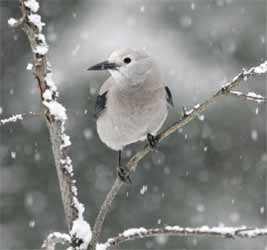
NOTE: ADULT SUPERVISION IS REQUIRED. Please read all instructions completely before starting. Observe all safety precautions.
Table of Contents
- Learn More: Hibernation
- Easy Reading
Project 1 - Feed and observe winter birds and animals
What you need:
- Some or all of the following: popcorn, peanuts in shells, apples, cranberries, pears, oranges, kiwi, peanut butter, suet (from butcher)
- String, needle and strong thread, scissors, knife
- Pine cone (to use with peanut butter), onion bag (to use with suet)
What to do:
- String the popcorn and cranberries on a long, doubled piece of thread. String the whole peanuts on another thread.
- Slice the fruit crosswise, about 1/4-1/2 inch thick. Poke a hole about 2/3 of the way across each slice, thread a 12 inch piece of string through it and tie the ends together.
- Put peanut butter or suet into the holes in a pine cone. Tie a string to it.
- Cut suet into large pieces and put it into an onion bag.
- Hang the food from trees and bushes in sheltered areas, where you can see it. Be patient. It takes time for birds and animals to find the food. Try different locations.
Note: If you choose to begin feeding the birds regularly, try to do it throughout the winter. They start to depend on you and may have trouble finding other sources of food later in the season.
Project 2 - Feed and observe winter birds
- An empty plastic milk or water bottle, or a milk carton
- Scissors, string, bird seed
- Wash the bottle or carton and rinse it well.
- Cut several small holes in the sides, about 2" from the bottom.
- Cut or poke two small holes near the top and thread a long piece of string through them.
- Fill the bird feeder with seeds and hang from a tree or shrub. Scattering some seeds on the ground can help the birds find the feeder.
- Watch the birds. Be patient.
- Try different types of seeds and different locations. Record your observations.
Project 3 - Discover how insects and spiders survive the winter
- Warm clothes and a nice day
- flashlight, magnifying glass (helpful but not necessary)
- large glass jar or milk carton, potting soil, cheesecloth or old nylon stocking
- rubber band, knife or pruning shears
- Go outside. Look into crevices in bark, in and under dead logs, piles of leaves, clumps of grass, shingles, around windows, in cracks between bricks, in attics, basements, garages, and any place that provides shelter. Use your flashlight and a stick for probing. Can you find active and hibernating adult insects, eggs, and cocoons? Try to leave things as you found them.
- Try to find a gall on a tree or shrub. Collect several different types. While still outside, cut them in half and observe what is inside.
- You can keep galls to see what emerges in the Spring. Cut a 4-6" section of a twig with a gall. Put a layer of potting soil into a jar, or a milk carton with holes cut in two sides. Put one end of the twigs into the dirt. Cover the jar with cheesecloth or stocking secured by a rubber band, or slide the milk carton into a stocking and tie the ends. Moisten the dirt occasionally. Keep the galls outdoors, out of direct sunlight.
Project 4 - Study animal tracks
- Animal tracks in snow or mud
- animal footprints shown on the right
- Study tracks in the snow or mud and try to match them to the drawings. (Sizes listed are approximate.)
- What animals were there? Are the tracks closely spaced or far apart? Were the animals walking or running? How many different animal tracks can you find? Keep a record over time.
How Do Animals Survive the Winter?
Animals have many different winter survival strategies, including migration , adaption and hibernation ...
Search This Site:
Top Articles
- Why is the Sky Blue? views:
- What Causes Static Electric Shocks? views:
- Why do Autumn Leaves Change Color? views:
- Winning Your Science Fair views:
Recommended
- Science Projects
- Metric Conversions

- Terms of Service
Copyright © 1995 - 2023, Science Made Simple, Inc. All Rights Reserved.
The science projects, science experiments, science fair projects & ideas, science articles and all other material on this website are covered by copyright laws and may not be reproduced without permission.
Your cart is empty
Have an account?
Log in to check out faster.

Animals In Winter Research Project
- Open media 1 in modal
- Open media 2 in modal
- Open media 3 in modal
- Open media 4 in modal
- Open media 5 in modal
- Open media 6 in modal
- Open media 7 in modal
- Open media 8 in modal
- Open media 9 in modal
- Open media 10 in modal
- Open media 11 in modal

Product description
Learn about animals in winter and their adaptations with these engaging, language-building activities! This January research project includes low-prep graphic organizers and writing activities to discuss and learn about how animals survive in the winter.
Lead your students to discuss migration, hibernation, habitats, and more while meeting science standards with this science of reading-aligned resource.
Here's what you'll get:
- Graphic organizers
- Recording sheets
- Writing and drawing activities
- Read aloud book suggestions
Your students will enjoy learning about animals in winter. They'll meet science and ELA standards while developing vocabulary and language skills and working on higher-order thinking skills.
Prep is quick and easy... Just print the labels and assemble the graphic organizers and recording pages!
Included activities:
- Schema maps
- Anchor chart (adaptation, migration, hibernation)
- Can/need chart
- Animals in winter sort
- Animals survive in winter
- Where animals hibernate

TEACHERS LIKE YOU SAID…
⭐️⭐️⭐️⭐️⭐️ Cory D. says: “ This winter animal research unit has been a great addition to my animal adaptation unit.”
⭐️⭐️⭐️⭐️⭐️ Cara C. says: “ I loved this unit . It was very engaging, and my students really had fun.”
⭐️⭐️⭐️⭐️⭐️ Nicki B. says: “ Love all the research bundles , thanks.”
___________________________________
You may also like…
→ Arctic Animals Research Project
→ Penguins Research Project
→ Zoo Animals Research Project
See all the TKS Research Projects:

Please be sure to check out our website to read our blog, download freebies & handouts in the Resource Center, see where Mr. Greg will be making appearances in the Events tab, and more. Visit our website here: The Kindergarten Smorgasboard
Greg & Jason Warren
Recently viewed products
- Choosing a selection results in a full page refresh.
Smitten with First
January 22, 2021
Winter Animals activities
Happy Friday! I’m sharing a few winter animals activities today. These activities are great to be used as a follow up to your polar bear and penguin units. These are simple (but fun) ways for students to share their learning!
WINTER ANIMALS ACTIVITIES
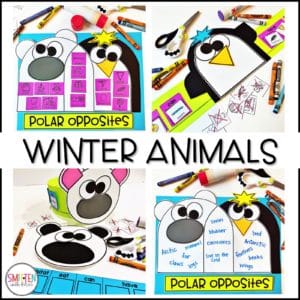
These can be used for prek, kindergarten, or even 1st grade!
First up, compare and contrast polar bears + penguins:
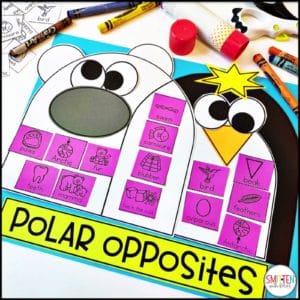
Depending on the level of your students, they can use the picture/word cards or write the facts that are the same and different for both animals.
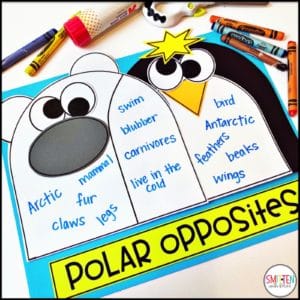
You can find this POLAR OPPOSITES activity here!
Next up are these hat-ivities! Y’all know I love me a good hat craft!

Students sort the picture/word card in the correct categories and glue to a sentence strip!
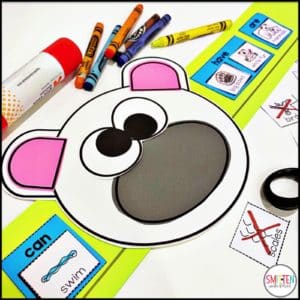
You can find the POLAR BEAR RESEARCH HAT here!

The PENGUIN RESEARCH HAT can be found here!
Latest on Instagram

- The Magazine
- Stay Curious
- The Sciences
- Environment
- Planet Earth
Top 10 Snow Animals and How They Survive the Cold
Would you have what it takes to thrive in the cold learn how these snow animals adapt and survive in snowy conditions and frigid environments..
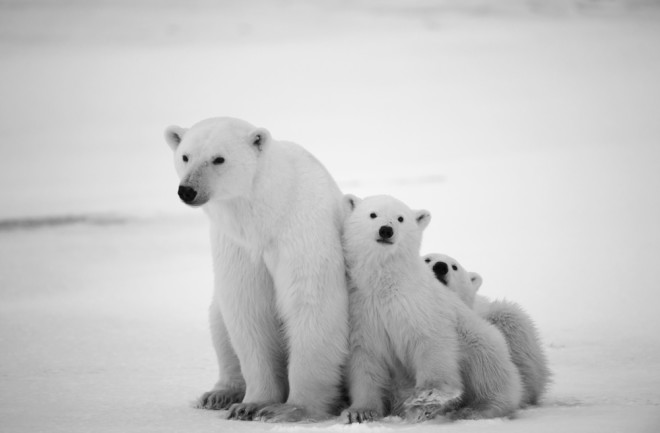
December is here and so is chilly weather. That is, if you live in a place where it does get chilly. For these 10 animals, where they live, it's always cold. They are known as chionophiles , or organisms that love and thrive in the snow.
These cold-weather animals have evolved to stay warm and well-fed even in the most frigid conditions. Find out how below!
1. Polar Bear
One of the most popular cold-weather animals is the polar bear. They are the largest bears in the world and are symbols of strength and perseverance in the wild. Polar bears have black skin and transparent fur. Their tongues are also blue ! Their fur coats are oily to help keep excess water from penetrating the fur and making them cold.
Where Do Polar Bears Live?
These white bears are at the top of the food chain in the Arctic circle. They are found across various countries that border the Arctic Ocean, including Norway (specifically the Svalbard archipelago), Russia, the United States (Alaska), Canada, and Greenland. They spend much of their lives in the water hunting for food.
What Do Polar Bears Eat?
Polar bears primarily feed on seals, which are their main source of food. They are especially adept at hunting ringed and bearded seals, which they catch using the sea ice as a platform. Polar bears rely on the ice to ambush seals at breathing holes or haul-out sites. In addition to seals, they occasionally consume other food items, including walruses, beluga whales, bird eggs, and carrion. Polar bears also rely heavily on ice sheets for travel, rest, and mating.
Are Polar Bears Endangered?
Due to climate change, however, there is less and less ice and the population of polar bears is decreasing. The global polar bear population is estimated to be around 20,000. The International Union for Conservation of Nature (IUCN) classifies them as vulnerable.
Read More: 5 Things You Never Knew About Polar Bears
2. Snow Leopard
Snow leopards’ gray-white pebbled fur helps them camouflage perfectly into the landscape. They blend in so well; they have been referred to as " ghosts of the mountain ." They also have strong back legs that can propel them six times their length and a long tail for balance and warmth.
Where Do Snow Leopards Live?
Snow Leopards are found in the high, rugged mountain ranges of Central Asia : Afghanistan, Bhutan, China, India, Kazakhstan, Kyrgyz Republic, Mongolia, Nepal, Pakistan, Russia, Tajikistan, and Uzbekistan. They are well adapted to living in cold, mountainous environments.
What Do Snow Leopards Eat?
They are carnivores, preying on mountain ibex, blue sheep, Tibetan sheep, and other mountain ungulates. They are also known to hunt smaller animals like hares and birds. Snow Leopards are ambush predators, adept at navigating their difficult terrain.
Are Snow Leopards Endangered?
While these cold-weather animals are incredibly beautiful, their species is threatened. Climate change, habitat loss, food scarcity, and poaching are major threats to the snow leopards' way of life. The global population of snow leopards is estimated to number less than 10,000 mature individuals and is expected to decline about 10 percent by 2040.
Read More: Are Snow Leopards Endangered?
3. Emperor Penguins
Penguins are the best-dressed cold-weather animals in the Southern Hemisphere . Compared to other penguin species, the emperor penguin is the largest, standing about four feet tall and weighing up to 100 pounds. They have thick black and white feathers with orange and yellow plumage around their head, neck, and chest. An interesting fact about penguins: To stay warm on the harshest winter nights, emperor penguins huddle together in an ever-rotating circle to keep themselves and their chicks warm.
Where Do Penguins Live?
The majority of penguin species live in the Antarctic region, but they can also be found on the coasts of South America, Africa, Australia, and the sub-Antarctic islands.
What Do Penguins Eat?
Penguins mainly eat a variety of seafood. Their diet includes fish, squid, and krill. They are excellent swimmers and dive into the water to catch their prey.
How Long Do Penguins Live?
The lifespan of penguins varies by species. On average, they can live between 15 to 20 years in the wild, with some species living longer under ideal conditions. The IUCN categorizes the 18 species of penguins with conservation statuses ranging from "least concern" to "endangered."
Read More: How Do Penguin Wings Reach High Speeds Underwater?
The walrus is a unique-looking cold-weather animal. They can grow up to 11 feet long and weigh over 1 ton! You can often hear walrus bellowing at each other from a distance. They are a vital part of the marine ecosystem and are known for their adaptations to the Arctic environment. Their survival, however, is challenged by factors like climate change, which is affecting their sea ice habitat.
Where Do Walruses Live?
There are two subspecies of walrus – the Atlantic and the Pacific. The Atlantic lives off the coasts of Canada and Greenland while the Pacific lives off the coasts of Russia and Alaska.
What Do Walruses Eat?
Walruses primarily feed on invertebrates, especially mollusks like clams. They use their sensitive whiskers (vibrissae) to detect prey on the ocean floor. Walruses can also eat other organisms like shrimp, crabs, tube worms, soft corals, tunicates, and sea cucumbers. Occasionally, they might prey on fish.
Let's not forget their furry mustaches and long tusks! Their tusks are large canine teeth that continue to grow throughout their lives and are not used for eating. Walrus use their teeth for a variety of things, including dragging themselves out of the cold water and across the ice.
Why Are Walruses Declining?
Because of their blubber and tusks, they were often poached and hunted for fuel and trade. However, they are at risk from something else entirely now – climate change. Due to receding ice in the Arctic Circle, there is less space to hold the migrating walrus as they make their way to their food sources. Instead, they have been gathering on smaller, rocky islands that can’t possibly hold them all. Some have drowned while others have fallen from cliffs after trying to find a place to rest.
The clip below is from the Our Planet special on Netflix featuring David Attenborough. It’s very difficult to watch, so viewers' discretion is advised.
Read More: 5 of the Fiercest Animals in the Tundra
5. Snowy Owl
Cue the Harry Potter theme music! Snowy owls have become one of the most popular owl breeds around the world. Renowned for its strikingly white plumage, which provides excellent camouflage in snowy environments, it has become a symbol of the Arctic's beauty and mystery.
Where Do Snowy Owls Live?
Snowy owls are typically found in North America, among the Arctic Circle and down into the northern United States. They can be found in Europe and Asia, as well.
It's possible to see snowy owls when they migrate to the northern U.S. for the winter. Keep an eye out for them during the day. They tend to perch on fence posts or tree branches. The owls’ white and black speckled feathers blend in with their surroundings, so watch for their striking yellow eyes.
What Do Snowy Owls Eat?
Snowy owls are incredibly smart and agile birds of prey. They primarily hunt small mammals like lemmings, voles, and mice, but they also prey on larger animals such as hares, rabbits, and even other birds, ranging from ducks and geese to songbirds and fellow raptors.
Snowy owls are also the heaviest owls in North America, weighing in at about four pounds due to their thick, insulating feathers. Unlike most owls, snowy owls are not nocturnal, mostly because of the long daylight hours of the Arctic Circle.
Read More: How Can Birds Of Prey Actually Lift and Carry Small Dogs?
Caribou is another popular cold-weather animal, especially around Christmas time. Caribou prefer the cold because they cannot stand the bugs that much on them in the summer. They've been known to run for several miles to shake off those pests.
Where Do Caribou Live?
They are found in North America, Europe, and Russia. In European countries, they have been domesticated.
Are Caribou and Reindeer the Same?
Yes, caribou and reindeer refer to the same species ( Rangifer tarandus ). The term "reindeer" is commonly used in Europe and Asia, particularly for domesticated or semi-domesticated animals, while "caribou" is used in North America to refer to wild populations.
A unique aspect of the caribou is that they are one of the few species of deer where both males and females grow antlers .
What Do Caribou Eat?
Caribou are primarily herbivores. Their diet consists of a variety of plants, including grasses, sedges, mosses, lichens (notably reindeer moss), leaves, and twigs.
Caribou have hollow-bottomed hooves that make it easier to dig up food that is under the snow. Their short bodies and thick fur help keep them warm while their long legs help them move through the snow. You can visit a herd of friendly caribou in Scotland in the Cairngorm mountains .
7. Beluga Whale
Beluga whales are another unique cold-weather animal and are found predominantly in Arctic and sub-Arctic regions . They inhabit cold coastal waters around North America, Russia, and Greenland. Beluga whales are commonly seen in the waters of the Arctic Ocean, particularly in areas like the Bering Sea, the Canadian Arctic Archipelago, and around Greenland.
They are also known to travel into estuaries and river basins. Early sailors noted how much these whales squeaked and chirped, nicknaming them " the canaries of the sea ."
What Do Beluga Whales Eat?
Beluga whales are social animals that hunt and migrate in pods. They have a diverse diet, primarily feeding on fish, crustaceans, and cephalopods. This includes species like salmon, herring, cod, shrimp, squid, and octopus. Their feeding habits can vary depending on their location and the season.
Are Beluga Whales Endangered?
Beluga whales are an important part of the ecosystem; however, due to oil drilling and ocean noise their habitat and health is at risk. They are classified as near threatened on the IUCN Red List.
Read More: Understanding How Whales Communicate
8. Arctic Fox
The Arctic fox has learned to adapt and survive the tundra in impressive ways. Their fur is pure white during the winter but changes to brown/gray during the warmer months to help it stay camouflaged.
How Do Arctic Foxes Survive?
The Arctic fox has shorter ears and snout compared to other fox breeds. Shorter extremities are easier to keep warm. The Arctic fox can survive temperatures as low as negative 58 degrees Fahrenheit! Its furry toes and fluffy tails also aid in keeping the Arctic fox warm.

What Do Arctic Foxes Eat?
The Arctic fox hunts for small mammals and is known to even follow polar bears around to eat their leftovers. When food is scarce, they will eat vegetation, as well.
Read More: Arctic Fox and Other Polar Predators May Have Originated In the Himalayas
9. Harp Seal
Yet another adorable cold-weather animal, harp seals have thick, oily fur and lots of blubber to help them stay warm in the frigid waters of the Arctic. Baby harp seals keep their fluffy white coat until they are about two weeks old. By then, their dark fur begins to grow in.
Where Do Harp Seals Live?
These seals live off the coasts of Canada, Greenland, Norway, and Russia.
What Do Harp Seals Eat?
Harp seals primarily feed on a variety of fish and invertebrates. Their diet includes capelin, herring, cod, and polar cod, as well as krill and other small crustaceans. They are adapted to hunt in the icy waters of their habitat, using their sensitive whiskers to detect prey.
Are Harp Seals Endangered?
Harp seals are not currently classified as endangered. They are listed as least concern by the IUCN. Seals are still hunted for their fur, but in recent years seal hunting has become a much more controversial topic.
Read More: Seals Caught On Film Clapping In the Wild For the First Time Ever
10. Arctic Hare
The Arctic hare is without a doubt one of the most adorable cold-weather animals around. Unlike other rabbit breeds, Arctic hares do not hibernate during the winter. Instead, they have adapted to the tundra with their thick fur and shortened ears. During the winter, their fur remains a brilliant white to match the snow. However, during the spring it changes to a grayish blue to blend in with the rocks and other surrounding vegetation.
Where Do Arctic Hares Live?
They are primarily found in the Arctic regions of North America and Greenland. Their habitat includes the open tundra and rocky mountainous areas.
What Does an Arctic Hare Eat?
Arctic hares feed on roots, berries, mosses, and other vegetation, and were once a vital source of food and clothing for Native American tribes. Since Arctic hares are prey animals, they have adapted speed and agility through the ice and snow, often reaching speeds of 40 miles per hour!
Read More: 4 Hidden Ways Animals Camouflage Themselves
This article was originally published on Dec. 9, 2021 and has since been updated by the Discover staff.
Already a subscriber?
Register or Log In

Keep reading for as low as $1.99!
Sign up for our weekly science updates.
Save up to 40% off the cover price when you subscribe to Discover magazine.

- ELEMENTARY TEACHING , INTEGRATED CURRICULUM ACTIVITIES
Animal Research Project for Kids at the Elementary Level in 2024
Whether you are doing a simple animal study or a fully integrated science, reading, and writing unit, this animal research project for kids includes everything you need. From the graphic organizer worksheets and guided note templates to the writing stationary, printable activities, projects, and rubrics.
Thousands of teachers have used this 5-star resource to have students complete self-guided animal research projects to learn about any animal they choose. The best part is, the resource can be used over and over again all year long by just picking a new animal! Learn all about this animal research project for kids at the elementary level below!

What is the Animal Research Project?
The animal research project is a resource that is packed with printable and digital activities and projects to choose from. It is perfect for elementary teachers doing a simple animal study or a month-long, fully integrated unit. It’s open-ended nature allows it to be used over and over again throughout the school year. In addition, it includes tons of differentiated materials so you can continue to use it even if you change grade levels. Learn about what’s included in it below!
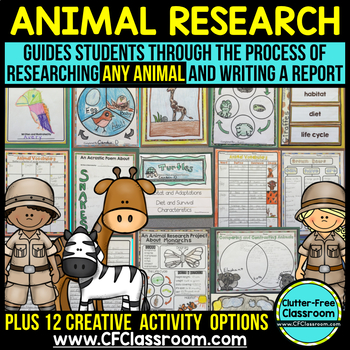
What is Included in the Animal Research Project
The following resources are included in the animal research project :
Teacher’s Guide
The teacher’s guide includes tips and instructions to support you with your lesson planning and delivery.
Parent Letter
The parent communication letter promotes family involvement.
Graphic Organizers
There are graphic organizers for brainstorming a topic, activating schema, taking notes, and drafting writing.
Research Report
There are research report publishing printables including a cover, writing templates, and resource pages.
There is a grading rubric so expectations are clear for students and grading is quick and easy for you.
Research Activities
The research activities include a KWL chart, can have are chart, compare and contrast venn diagram, habitat map, vocabulary pages, illustration page, and life cycle charts.
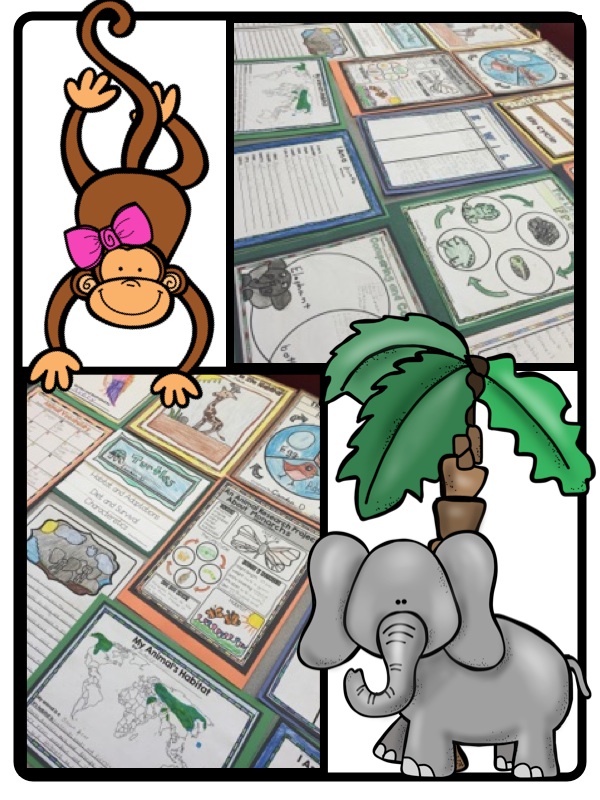
Animal Flip Book Project
There are animal flip book project printables to give an additional choice of how students can demonstrate their understanding.
Animal Flap Book Project
There is an animal flap book project printables that offers students yet another way to demonstrate their learning.
Animal Research Poster
The animal research poster serves as an additional way to demonstrate student understanding.
Poetry Activities
The resource includes poetry activities to offer students an alternative way to demonstrate their learning.
Digital Versions
There is a digital version of the resource so your students can access this resource in school or at home.
Why Teachers love the Animal Research Project
Teachers love this animal research project because of the following reasons:
- This resource guides students through the research and writing process, so they can confidently work their way through this project.
- It is a great value because it can be used over and over again throughout the school year because the pages can be used to learn about any animal.
- It offers several ways students can demonstrate their learning.
- It includes a ton of resources, so you can pick and choose which ones work best for you and your students.
- It is printable and digital so it can be used for in-class and at-home learning.
This animal research packet is great because it can be used over and over again using absolutely any animal at all. The printables in this packet are ideal to use with your entire class in school, as an at-home learning extension project or as a purposeful, open-ended, independent choice for your students who often finish early and need an enrichment activity that is so much more than “busy work.”
The Research Report Process
This animal research project packet was designed in a manner that allows you to use all of the components when studying any animal. Because the printables can be used over and over, I will often work through the entire researching and writing process with the whole class focusing on one animal together, This allows me to model the procedure and provide them with support as they “get their feet wet” as researchers. Afterwards I then have them work through the process with an animal of choice. You may find it helpful to have them select from a specific category (i.e. ocean animals, rainforest animals, etc) as this will help to streamline the resources you’ll need to obtain.
Step 1: Brainstorm a list of animals to research. Select one animal.
During this stage you may want to provide the students with a collection of books and magazines to explore and help them narrow down their choice.
Step 2: Set a purpose and activate schema.
Students share why they selected the animal and tell what they already know about it. Next, they generate a list of things they are wondering about the animal. This will help to guide their research.
Step 3: Send home the family letter.
To save you time, involve families, and communicate what is happening in the classroom, you may want to send home a copy of the family letter. It’s so helpful when they send in additional research materials for the students.
Step 4: Research and take notes.
The two-column notes template is a research-based tool that helps the kids organize their notes. I added bulleted prompts to guide the students in finding specific information within each category. This method has proven to be highly effective with all students, but is especially useful with writers who need extra support.
I have included two versions of the organizers (with and without lines). I print a copy of the organizer for each student. I also copy the lined paper back to back so it is available to students who need more space.
Step 5: Write a draft.
Using the information gathered through the research process, the students next compose drafts. The draft papers were designed to guide the students through their writing by providing prompts in the form of questions. Answering these questions in complete sentences will result in strong paragraphs. It may be helpful to give them only one page at a time instead of a packet as it make the task more manageable.
Step 6: Edit the draft.
Editing can be done in many ways, but it is most effective when a qualified editor sits 1:1 with a student to provides effective feedback to them while editing.
Step 7: Publish.
Print several copies of the publishing pages. I like to have all my students start with the page that has a large space for an illustration, but then let them pick the pages they want to use in the order they prefer after that. I have them complete all the writing first and then add the illustrations.
Finally, have the children design a cover for the report. Add that to the front and add the resources citation page to the back. Use the criteria for success scoring rubric to assign a grade. The rubric was designed using a 20 point total so you can simply multiply their score by 5 to obtain a percentage grade. The end result is a beautiful product that showcases their new learning as well as documents their reading and writing skills.
In closing, we hope you found this animal research project for kids helpful! If you did, then you may also be interested in these posts:
- How to Teach Research Skills to Elementary Students
- 15 Animals in Winter Picture Books for Elementary Teachers
- How to Teach Informative Writing at the Elementary Level
You might also like...

Project Based Learning Activities for Elementary Students

Me on the Map Activities and Printables for Elementary Teachers – 2024

Student-Made Board Games Ideas for Elementary Teachers in 2024
Join the newsletter.

- CLUTTER-FREE TEACHER CLUB
- FACEBOOK GROUPS
- EMAIL COMMUNITY
- OUR TEACHER STORE
- ALL-ACCESS MEMBERSHIPS
- OUR TPT SHOP
- JODI & COMPANY
- TERMS OF USE
- Privacy Policy
Sorry, it looks like you have JavaScript disabled. Learn how to enable it.
Register for free
Arctic Animals Research Project and Winter Reading
$ 10.00 Multi-licenses $ 9.00
- Language Arts
- Resource Type
- Literacy Centers
sold by Katelyn's Learning Studio
View shop page
Item Details
Digital Download
INSTANT DOWNLOAD Files will be available for download from your account once payment is confirmed. Learn more . Please contact the seller about any problems with your order using the question button below the description.
Item description
Let students research arctic animals in a fun, hands on way! This differentiated project is packed with winter reading passages to practice nonfiction comprehension and reach the needs of all students. Students will love learning about these polar animals!
Help students develop these critical reading skills:
Re-reading for comprehension
Citing evidence from the text
Gathering key details
Answering questions
Reporting what they learn
Ideas for Classroom Use:
Independent work : Have students work on their projects independently while the teacher pulls back small groups.
Group Projects : Let students complete projects as a group.
Centers : Laminate the passages and let students use dry erase markers to mark them up and then fill out a flip book. They can do this activity for up to 15 different animals!
Guided reading lesson : Choose the appropriate level for each group. Read and fill out a flip book report together.
Homework : Send home as a fun and exciting project to complete with their family.
Jigsaw Group Activity : Assign each group of students an animal to become an expert on, and then mix the groups up and have each member teach their group about their animal.
Animal Exhibit: Have students glue all of their materials onto a poster. Set the posters up around the classroom and let students present to parents and/or other classes!
Teacher Prep
Choose the appropriate level for your students.
Print a passage and flip book for each student
Let students assemble their flip books (easy cut and staple)
Animal Reading Passages
Passage for 15 different animals. Each animal passage has 3 different levels, for 45 reading passages altogether!
• Polar Bear
• Arctic Fox
• Beluga Whale
• Snowy Owl
• Harp Seal
• Emperor Penguin
• Arctic Hare
• Arctic Wolf
• Dall Sheep
Lexile Levels:
• Level A: L250
• Level B: L350
• Level C: L450
Flip Book Research Reports
-2 different levels to reach the needs of all students.
Flipbook covers the following topics:
• Appearance
• Life Cycle
• Adaptations
• Interesting Facts
*All facts can be found in the animal reading passages!
Animal Diagram Worksheets
• Blank diagram worksheet for each animal
• Students label special features of each animal
Arctic Habitats Poster
• Labeled with features of the Arctic Habitat
• In color and black/white
Report Writing Paper
• 4 different options for students to write a written report
Answer Keys
• For both levels of flip books for each animal
• For animal diagram worksheets
**********Check out some of my other products!**********
Snowflake Bentley Winter Activities
Winter Partner Plays
Winter Math Mystery Jokes
MEGA Reading Intervention Binder Bundle
From the same author
Winter addition and subtraction worksheets.
by Katelyn's Learning Studio
Make math practice fun with these silly Winter jokes and riddles! Students discover the answers to each joke by solving addition and subtraction problems (within 30).Student Directions:Find the answer to…
- Math Centers
Valentines Day Kindness Activity – Complimat for Classroom Community
Looking for a fun Valentine's Day activity or party game? This Valentine's Day Compli-mat Activity is perfect for students to practice giving compliments and building classroom community!Classroom Use:Students travel around…
- Character Education
- For All Subjects
- Valentine's Day
2 Digit Addition with Regrouping Worksheets – First Grade Math Worksheets
Addition and regrouping can be confusing for struggling learners. Make it concrete and easy to understand by using tens and ones worksheets. This no prep unit makes adding easy and…
- Special Education
2 Digit Subtraction with Regrouping Worksheets – First Grade Subtracting Worksheets
Make 2 digit subtraction with regrouping easy to understand by using base ten blocks! Subtraction with regrouping can be confusing for struggling learners. These worksheets help reach all students by…
2 Digit Addition and Subtraction with Regrouping Worksheets
Avoid confusion when teaching 2 digit addition and subtraction with regrouping by using base ten blocks! These systematic and scaffolded tens and ones worksheets help students learn two digit adding…
Phonics Assessment and Progress Monitoring
Set up an easy phonics assessment and progress monitoring system for reading intervention that you can use all year! Have quick phonics assessments at your fingertips by keeping these no-prep…
- Kindergarten

COMMENTS
12. $8.00. PDF. This animals in the winter research project will allow your students to research and write about how animals survive in winter: hibernation, migration, and adaptation.Students will learn how and why animals adapt, hibernate or migrate and where these things happen.Students will also write about anim.
18 Animal Science Lessons and Experiments. By Amy Cowen on October 19, 2022 8:00 AM. Use these free STEM lessons and activities to teach about animal behavior, animal anatomy, and adaptations as you explore animal science K-12 students. The free STEM lessons and activities below help students learn about animals and animal science, including ...
Screen 1: Students learn that they will examine the different ways animals survive winter in the wild. Screen 2: Students read about adaptations and how they help animals survive where they live. They also write down examples of changing environmental conditions that cause animals to evolve with certain adaptations.
This printable learning center is the perfect way to introduce your students to animals that live in the snow and go to great lengths to ensure their winter survival. With this printable science activity, students will look at images of different animals and identify them. Then, they will sort those animals into three categories based on ...
K-2 Research Writing & Science Mini PBL. Our Winter Animal Adoption Center Mini PBL is a hands-on, interdisciplinary project perfect for K-2 classrooms. Have students explore winter animals and habitats by opening their own Winter Animal Adoption Center! This project sparks creativity and real-life connections as students research winter a. 4.
Let your kids practice gathering information and researching facts about arctic foxes, moose, seals, musk oxen, narwhals, penguins, and walruses with this winter animal research bundle.This activity helps them to work independently or in pairs and work on their research skills. **Please read the description fully and check the video preview/preview before purchasing to see if this research ...
String the popcorn and cranberries on a long, doubled piece of thread. String the whole peanuts on another thread. Slice the fruit crosswise, about 1/4-1/2 inch thick. Poke a hole about 2/3 of the way across each slice, thread a 12 inch piece of string through it and tie the ends together. Put peanut butter or suet into the holes in a pine cone.
Learn about animals in winter and their adaptations with these engaging, language-building activities! This January research project includes low-prep graphic organizers and writing activities to discuss and learn about how animals survive in the winter. Lead your students to discuss migration, hibernation, habitats, and more while meeting science standards with this science of reading-aligned ...
WINTER ANIMALS ACTIVITIES. These can be used for prek, kindergarten, or even 1st grade! First up, compare and contrast polar bears + penguins: Depending on the level of your students, they can use the picture/word cards or write the facts that are the same and different for both animals. You can find this POLAR OPPOSITES activity here!
October 23, 2023. This winter, Wild Animal Initiative is launching its first field research project — a significant milestone not only for us as an organization, but also for the larger community of wild animal welfare scientists.. A team of researchers will examine how varying environmental conditions such as water availability, noise level, and land use affect the welfare of a common ...
Step 3: I Investigate. I build "inquiry time" into your day to conduct whole class, shared research using the resources we've gathered. I model note taking and let children take their own notes using a combination of pictures and words. I also Incorporate what children are learning about the animal into their choice time discovery centers.
Find out how below! 1. Polar Bear. Credit: (Sergey Uryadnikov/Shutterstock) One of the most popular cold-weather animals is the polar bear. They are the largest bears in the world and are symbols of strength and perseverance in the wild. Polar bears have black skin and transparent fur. Their tongues are also blue!
This animal research project packet was designed in a manner that allows you to use all of the components when studying any animal. Because the printables can be used over and over, I will often work through the entire researching and writing process with the whole class focusing on one animal together, This allows me to model the procedure and ...
From classifying animals in the Serengeti to discovering new exoplanets using the Kepler space telescope, researchers of all backgrounds have used the free project builder to create engaging, accessible citizen science projects. ... The contributions of Zooniverse volunteers produce real research. Our projects have led to hundreds of peer ...
Let students research arctic animals in a fun, hands on way! This differentiated project is packed with winter reading passages to practice nonfiction comprehension and reach the needs of all students. Students will love learning about these polar animals! Help students develop these critical reading skills: Re-reading for comprehension
A no prep Winter Animal research Graphic Organizer for elementary students for fact gathering and researching animals. Includes a one page fact finding Graphic Organizer for lower grades, and a booklet for upper grades. How to choose an animal Fact vs opinion Template for students to fill out while researching Rubric
Item description. For kids, Winte r is an excellent time to learn about arctic animals! Learn more about the walrus, caribou, narwhal, polar bear, and snowy owl with these printable worksheets about arctic animals. With each of these polar animal worksheets, you can fill in the fact sheet with the animal's habitat, weight, size, and diet, as well as discover a fun facts.
Description. Our Animal Research Project can be used with ANY animal (like an All About All About Penguins or All About Polar Bears). It's a GREAT VALUE because you can reuse it for arctic animals in polar habitats or hibernating animals in winter or butterflies in the spring. The graphic organizers, scaffolded guided notes and scoring rubric ...
Let students research arctic animals in a fun, hands on way! This differentiated project is packed with winter reading passages to practice nonfiction comprehension and reach the needs of all students. Students will love learning about these polar animals! Help students develop these critical reading skills: Re-reading for comprehension
About Winter Animal: Coloring/Research Project Graphic. 2X Added to favorites . Add to favorites. Added Winter Arctic Animals Coloring Pages & Animal Research Project Include Animal Research Project & Instruction Art ELA Activities No PREP - 44 Pages, No PREP! Discover the joys of winter wildlife with our enriching Winter Animal Coloring ...
In the case of CMD, evidence strongly suggests that the gut microbiome - partly due to the metabolites the microbes produce - plays a critical role, and that by making small changes, individuals could reduce their risk of, for example, developing diabetes or suffering a heart attack. This initiative aims to generate significant new ...
Arctic Animals Research Project - Winter Writing. Rated 4.97 out of 5, based on 31 reviews ... Enhance your teaching of informative writing with an animal research project ! This bundle is sure to get your students excited and engaged with building research skills and writing essays. Make research projects fun by assigning each student an ...